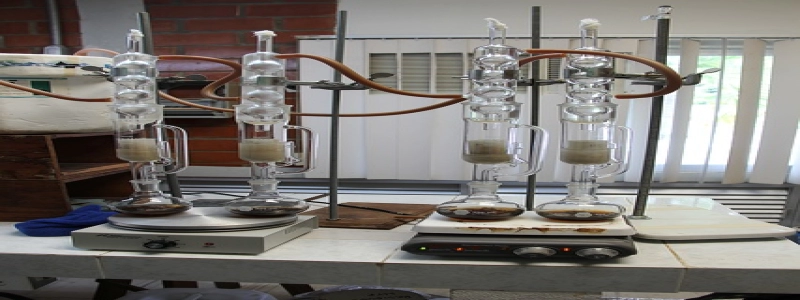EtherCAT over Ethernet
1. Introduction
1.1 What is EtherCAT?
1.2 What is Ethernet?
1.3 Need for EtherCAT over Ethernet
2. Understanding EtherCAT
2.1 EtherCAT Technology
2.2 Features and Benefits
2.3 Architecture and Topology
3. Ethernet Basics
3.1 Overview of Ethernet
3.2 Ethernet Protocols and Standards
3.3 Ethernet Devices and Communication
4. EtherCAT over Ethernet
4.1 Implementation Details
4.2 Advantages of EtherCAT over Ethernet
4.3 Challenges and Limitations
5. Applications of EtherCAT over Ethernet
5.1 Industrial Automation
5.2 Robotics
5.3 Automotive
5.4 Energy
6. Conclusion
1. Introduction
1.1 What is EtherCAT?
EtherCAT (Ethernet for Control Automation Technology) is an Ethernet-based fieldbus system used in industrial automation. It is a real-time communication technology that enables high-speed and deterministic communications between various devices in a network.
1.2 What is Ethernet?
Ethernet is a widely used standard for local area networks (LANs). It provides a reliable and efficient way to transmit data between devices. Ethernet is based on the IEEE 802.3 standard and uses copper or fiber-optic cables to connect devices.
1.3 Need for EtherCAT over Ethernet
The need for EtherCAT over Ethernet arises from the increasing demand for real-time communication in industrial automation. Traditional Ethernet protocols are not capable of providing the required determinism and speed for critical control applications. EtherCAT provides a solution by leveraging the existing Ethernet infrastructure while maintaining real-time performance.
2. Understanding EtherCAT
2.1 EtherCAT Technology
EtherCAT uses a master-slave communication model, where a master device controls and coordinates the data exchange with multiple slave devices. It employs a unique communication technique called \”processing on the fly,\” which allows data to be processed by each slave device as it passes through, eliminating the need for additional bus cycles.
2.2 Features and Benefits
EtherCAT offers several features and benefits, including high speed, low latency, and high synchronization accuracy. It allows for real-time control of distributed systems with thousands of nodes, while maintaining excellent performance. It also supports hot-plugging, making it easy to add or remove devices from the network without interrupting the communication.
2.3 Architecture and Topology
EtherCAT uses a linear topology, where all slave devices are connected in series through a single cable. This reduces wiring complexity and cost. The master device starts the communication by sending a frame called a Telegram, which is then processed by each slave device in sequence. The response from each slave is sent back to the master, forming a loop-like architecture.
3. Ethernet Basics
3.1 Overview of Ethernet
Ethernet is a widely adopted networking technology that allows for the transmission of data packets between devices. It provides a flexible and scalable solution for interconnected devices in a local network.
3.2 Ethernet Protocols and Standards
Ethernet relies on various protocols and standards, such as TCP/IP (Transmission Control Protocol/Internet Protocol), UDP (User Datagram Protocol), and MAC (Media Access Control). These protocols define the rules for data transmission, addressing, error detection, and handling.
3.3 Ethernet Devices and Communication
Ethernet devices include network interface cards (NICs), switches, routers, and cables. They communicate using Ethernet frames, which encapsulate the data packets and control information. Ethernet supports point-to-point and broadcast communication, allowing devices to send data to specific recipients or to all devices on the network.
4. EtherCAT over Ethernet
4.1 Implementation Details
EtherCAT over Ethernet is achieved by encapsulating EtherCAT telegrams into standard Ethernet frames. This allows EtherCAT traffic to coexist with other Ethernet traffic on the same network infrastructure. The master device handles the EtherCAT frames, while the Ethernet infrastructure handles the non-EtherCAT traffic.
4.2 Advantages of EtherCAT over Ethernet
EtherCAT over Ethernet offers several advantages. It leverages the existing Ethernet infrastructure, reducing the need for separate cabling and infrastructure for EtherCAT. It also provides high-speed, deterministic, and synchronized communication, making it suitable for demanding industrial control applications. Additionally, EtherCAT over Ethernet allows for seamless integration with other Ethernet-based systems.
4.3 Challenges and Limitations
There are some challenges and limitations associated with EtherCAT over Ethernet. Compatibility with existing Ethernet infrastructure may be limited, requiring updates or modifications. Bandwidth allocation and network configuration need to be carefully managed to ensure efficient communication and avoid network congestion. Additionally, EtherCAT over Ethernet may require specialized hardware and software support.
5. Applications of EtherCAT over Ethernet
5.1 Industrial Automation
EtherCAT over Ethernet is widely used in industrial automation for various applications, such as machine control, motion control, and data acquisition. It enables real-time and synchronized communication between multiple devices, enhancing productivity and efficiency.
5.2 Robotics
Robotic systems often require high-speed and deterministic communication between multiple components. EtherCAT over Ethernet provides the necessary performance and reliability for real-time control of robotic systems, enabling advanced automation tasks.
5.3 Automotive
The automotive industry heavily relies on EtherCAT over Ethernet for control and monitoring applications. It allows for precise synchronization between different automotive systems, such as engine control units, sensors, and actuators.
5.4 Energy
EtherCAT over Ethernet is also used in the energy sector for power distribution, smart grid management, and renewable energy systems. It enables real-time monitoring and control of energy generation, ensuring reliable and efficient operations.
6. Conclusion
EtherCAT over Ethernet combines the benefits of EtherCAT’s real-time performance with the flexibility and scalability of Ethernet. It provides a reliable and efficient solution for high-speed and deterministic communication in industrial automation and various other applications. However, its successful deployment requires careful consideration of network configuration, hardware compatibility, and bandwidth management. With its numerous advantages, EtherCAT over Ethernet continues to play a crucial role in advancing real-time control systems and driving innovation in various industries.








